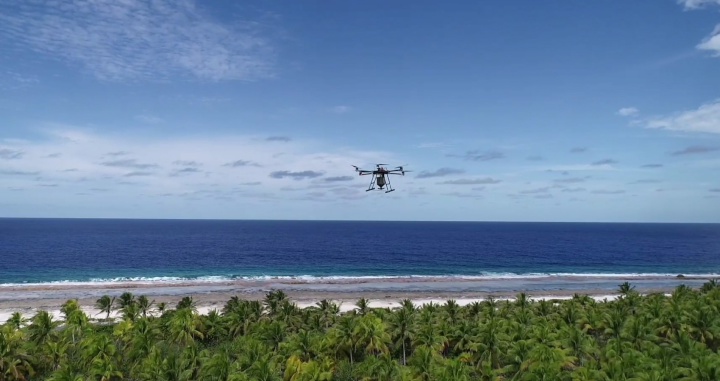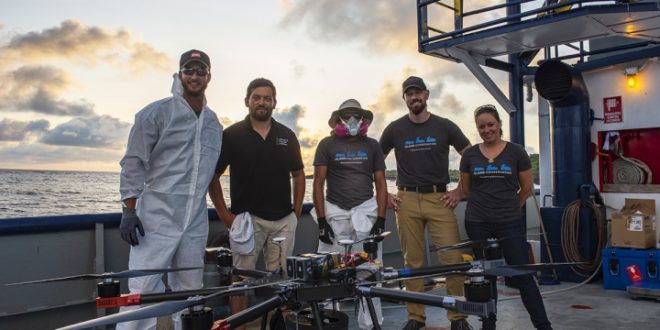Hon Eugenie Sage
Minister of
Conservation
Minita mō Te Papa
Atawhai
New predator-control drones
to help nature in hard-to-reach
places
Galapagos rat eradication project, attributed to ECT and
Island Conservation.
The Department of
Conservation (DOC) is investing $790,000 to test a new
predator-control drone and take another step towards a
predator free Aotearoa, the Minister for Conservation
Eugenie Sage announced today.
“Restoring nature so
indigenous species can thrive requires new tools and
technologies for predator control in a way that is humane,
safe, effective and affordable.
“Drones have the
potential to be a game-changer – in helping remove pests
from remote offshore islands, respond to pest incursions and
suppress predators on mainland New Zealand. They may become
another of the broad range of tools available to the
Department of Conservation (DOC) and landholders to manage
predators and restore New Zealand’s unique natural
landscapes.

flight during a baiting operation, attributed to
ECT
Predator-control drones have not
previously been used in New Zealand. Kiwi startup
Environment & Conservation Technologies (ECT) will test how
the drone performs in a series of field trials, using a new
light-weight bait spreader to apply non-toxic cereal baits
over areas between 600 to 2000ha.
DOC’s Tools to Market
programme will invest $790,000 in the drone
proposal.
“It will look at the feasibility and costs of
drone use for predator control, as well as potential savings
in carbon emissions from current aerial methods.
“This
Government is supporting innovative Kiwi companies such as
ECT to develop the technology of the future to bring back
our native wildlife,” Eugenie Sage said.
Background information
DOC received 56
applications following a call for registrations of interest
in the department’s Tools to Market in May last year.
Other proposals are still being considered.
In Budget 2018
this Government committed $700,000 per year over four years
for Tools to Market to improve current predator control
tools. This built on an initial allocation of $700,000 per
year over four years as part of Predator Free 2050. Five
projects have been funded and began in 2017 including a
long-life rat lure, now at a commercial phase, and an
automatic pest detection device (PAWS).
Tools to Market
funding is closely aligned with Predator Free 2050 Ltd’s
investment in predator eradication tools and technology
through its Products to Projects programme, backed by the
Provincial Growth Fund.
New Zealand-based ECT develops
automated technology and provides drones for use in
environmental projects around the world. Last year the
company used drones to remove rats from two islands in the
Galapagos working with international Island Conservation.
ECT is also redesigning the Spitfire toxin delivery device
to control stoats and possums, funded by Predator Free 2050
Ltd.
The project involves three trials, which will be
complete in 2022. The field trials will follow rigorous
safety standards and get Civil Aviation Authority approvals
for each stage of the project. The proposal is a ‘proof
of concept’ to test the capability to the drone to apply
cereal bait and assess feasibility and costs.
Using drones
will not mean more 1080 drops. DOC’s aerial 1080 predator
control programme is determined by the needs of our native
species, predator numbers, environmental conditions such as
forest masts and budgets. Any use of a drone to apply 1080
cereal bait would need to meet the same rigorous standards
under current regulations as helicopter application.
© Scoop Media
 Unmanned Aerial Vehicle The latest drone news
Unmanned Aerial Vehicle The latest drone news




